The dew point temperature is 11.65°C
Explanation:
Dew point temperature formula is given as follows;
From the modified Apjohn equation, we have;

Which gives;
The saturation vapor pressure at 15°C = 1.705 kPa
 = 1.705 kPa
= 1.705 kPa
p = 101.325 kPa
 = 1.705 - 1.8*101.325*(20 - 15)/2700 = 1.36725 kPa
= 1.705 - 1.8*101.325*(20 - 15)/2700 = 1.36725 kPa
The dew point temperature is the steam saturation temperature at 1.36725 kPa
= 6.9696 + (17.4953 - 6.9696)*(0.0136725 - 0.01)/(0.02 - 0.01) = 10.84°C by approximation calculation from steam tables and 284.8 K = 11.65°C from Wolfram Alpha.
The relative humidity is 36%.
Explanation:
Relative humidity is the measure of ratio of actual vapor density to saturated vapor density in a given system. So there are different ways to measure the relative humidity in the atmosphere. One of the common ways is to measure using Psychrometer. In this instrument, two different thermometers are used as measuring device. One of the thermometer measures the humidity in dry air and another in wet air. So the difference of the temperature of dry and wet air bulb will be related to determine the relative humidity percentage. The formula to determine the relative humidity using this method is as below.
![Relative humidity=\frac{(e_{w}-[N*(1+0.00115*T_{w}*(T_{d}-T_{w}))])*100}{e_{d} }](/tpl/images/0444/9670/afcc7.png)
Also,
![e_{d}=6.112*e^{[\frac{(17.502*T_{d} )}{(240.97+T_{d} )}]}](/tpl/images/0444/9670/a646a.png)
And,
![e_{w}=6.112*e^{[\frac{(17.502*T_{w} )}{(240.97+T_{w} )}]}](/tpl/images/0444/9670/e7172.png)
Here e =2.718,  and
and  are the temperature at dry bulb and wet bulb temperatures, respectively.
are the temperature at dry bulb and wet bulb temperatures, respectively.
So, the relative humidity after substituting the values of Td = 2 C and Tw = -2 C is 36%.
The relative humidity is 36%.
Explanation:
Relative humidity is the measure of ratio of actual vapor density to saturated vapor density in a given system. So there are different ways to measure the relative humidity in the atmosphere. One of the common ways is to measure using Psychrometer. In this instrument, two different thermometers are used as measuring device. One of the thermometer measures the humidity in dry air and another in wet air. So the difference of the temperature of dry and wet air bulb will be related to determine the relative humidity percentage. The formula to determine the relative humidity using this method is as below.
![Relative humidity=\frac{(e_{w}-[N*(1+0.00115*T_{w}*(T_{d}-T_{w}))])*100}{e_{d} }](/tpl/images/0444/9670/afcc7.png)
Also,
![e_{d}=6.112*e^{[\frac{(17.502*T_{d} )}{(240.97+T_{d} )}]}](/tpl/images/0444/9670/a646a.png)
And,
![e_{w}=6.112*e^{[\frac{(17.502*T_{w} )}{(240.97+T_{w} )}]}](/tpl/images/0444/9670/e7172.png)
Here e =2.718,  and
and  are the temperature at dry bulb and wet bulb temperatures, respectively.
are the temperature at dry bulb and wet bulb temperatures, respectively.
So, the relative humidity after substituting the values of Td = 2 C and Tw = -2 C is 36%.
Leslie argues that an organism called a Euglena is a plant because it is eukaryotic, has a nucleus, makes its own food, and is unicellular. Where is Leslie's error? Plants do not make their own food..
In school, Brendan has been conditioned to get up from his seat every time he hears the school bell ring.
Labels are :

A spring is a natural discharge point of subterranean water at the surface of the ground or directly into the bed of a stream, lake, or sea. Water that emerges at the surface without a perceptible current is called a seep. Wells are holes excavated to bring water and other underground fluids to the surface.
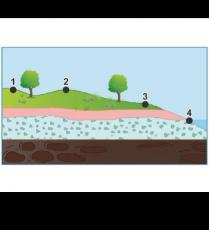
The image shows a cross-section of land scape.
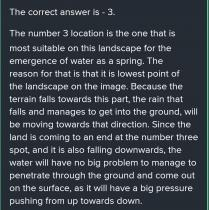
Need this store of protein:
The seed consists of three components: embryo, endosperm (sometimes perisperm), and seed-coat. Both endosperm and embryo are the products of double fertilization, whereas the seed-coat develops from the maternal, ovular tissues. The seed habit is a significant advancement in the evolution of higher plants.
Anatomy of seed :-
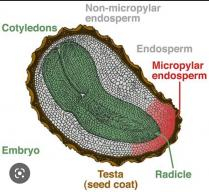
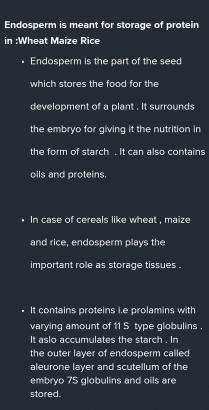
Seed storage proteins provide a source of amino acids and reduced N necessary for germination and early growth of the seedling.
The T-chart by categorizing each statement as something that would most likely be relevant to gene flow or genetic drift. Some answers will fit in both columns depending on the situation. is random is a mechanism for evolution is often related to disasters is also called “migration” deals with movement between populations...
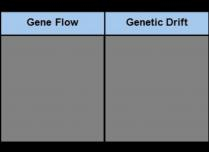
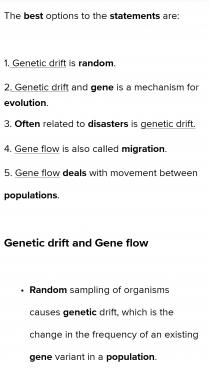
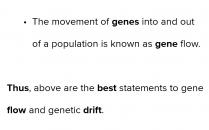
Angelica suffers from lupus disease.people with this disease are extremely sensitive to sun light.

A scientist look for in a plant that would identify it as a club moss rather than a liverwort.
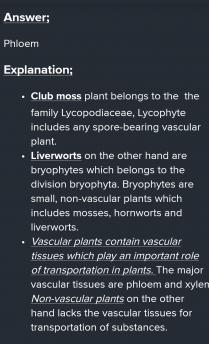

It will provide an instant answer!
